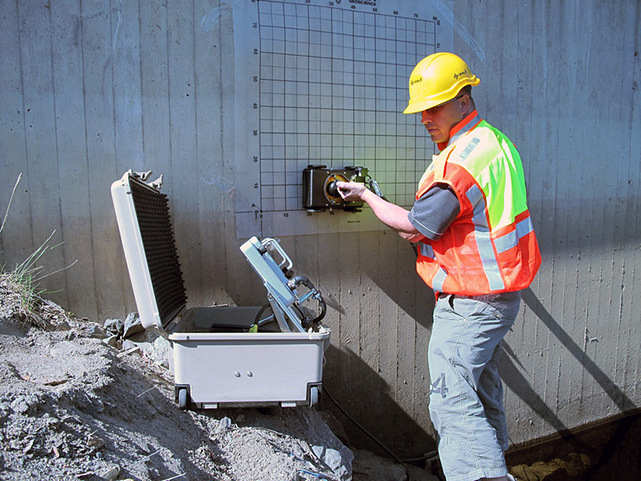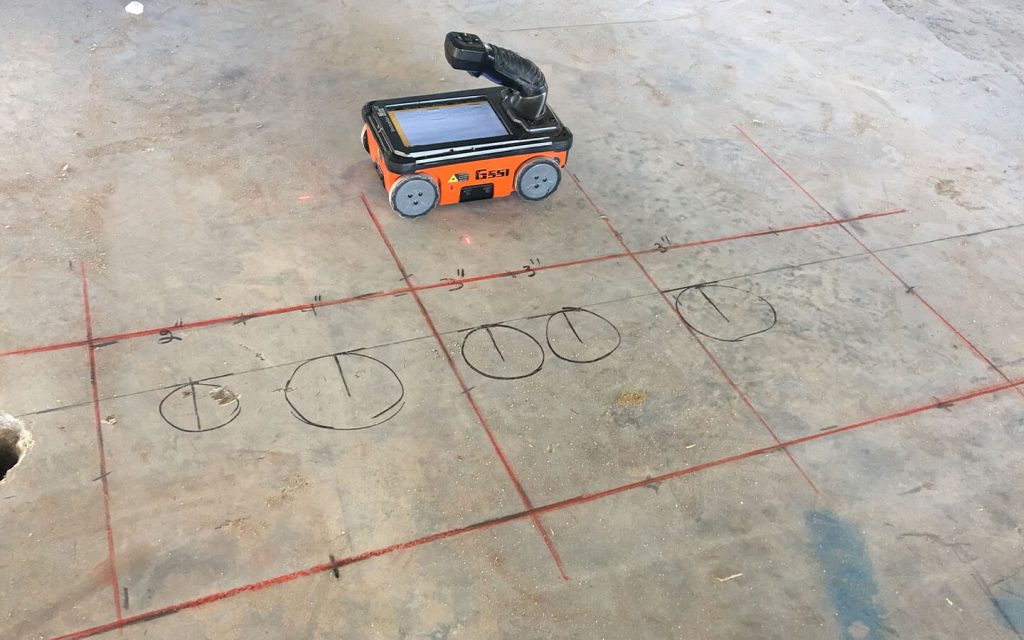RainierGPR Service Areas: Leading Concrete Scanning Services Across Regions
RainierGPR Service Areas: Leading Concrete Scanning Services Across Regions
Blog Article
Concrete Scanning: An Important Step Towards Ensuring Structural Stability and Safety
In the world of building and facilities upkeep, the importance of concrete scanning can not be overstated. This thorough procedure holds the vital to revealing possible threats hidden below the surface area of seemingly strong frameworks. By utilizing innovative technology and techniques, concrete scanning functions as an essential device in making certain that the stability and safety and security of structures and bridges are supported to the greatest criteria. Nevertheless, past its surface-level ramifications, the duty of concrete scanning prolongs far deeper than fulfills the eye.
Relevance of Concrete Scanning
Concrete scanning plays an important function in guaranteeing the structural integrity and safety of structures and infrastructure projects. By utilizing innovative innovations such as ground-penetrating radar (GPR) and electro-magnetic induction, specialists can non-destructively inspect concrete frameworks to identify potential problems, spaces, ingrained things, and reinforcement layout. This process allows very early detection of abnormalities that can compromise the security of a framework, preventing costly damages and guaranteeing the safety and security of occupants.
Before boring, cutting, or coring right into concrete, scanning assists identify the specific areas of rebar, post-tension cords, and other ingrained aspects, decreasing the danger of unintentional hits that could lead to structural weaknesses. In addition, concrete scanning aids in quality control by confirming the density of concrete covers and finding any type of disparities that may influence the overall longevity of the structure.
Technology for Concrete Inspection

Advantages of Early Discovery
Prompt discovery of architectural concerns can dramatically reduce risks and guarantee the durability of construction projects. By recognizing potential problems early on in the construction procedure, stakeholders can take aggressive measures to resolve concerns prior to they escalate into bigger and much more costly problems. One of the essential benefits over at this website of very early discovery is the prevention of structural failures, which can present serious safety hazards and lead to task hold-ups and monetary my response losses.
Moreover, very early discovery permits timely repairs and upkeep, which can aid expand the life expectancy of the structure. By addressing issues quickly, building teams can stay clear of expensive repairs and even the need for early replacement of architectural elements. This proactive technique not just saves time and cash but additionally enhances the overall safety and security and toughness of the construction task.
Additionally, very early discovery can improve task planning and decision-making by giving stakeholders with beneficial understandings into the problem of the structure. Armed with this details, job supervisors can make informed options regarding building and construction techniques, timelines, and materials, bring about much more reliable and successful project outcomes.
Making Sure Architectural Stability
Ensuring the architectural security of a building task is extremely important to its safety and security and durability. Concrete scanning plays a vital duty in ensuring architectural security by finding prospective problems such as gaps, delamination, or support rust that could endanger the stability of the framework over time.
By using advanced scanning innovations like ground-penetrating radar (GPR) and electro-magnetic induction, construction professionals can non-invasively evaluate concrete frameworks to determine areas of concern beneath the surface area. This positive approach allows for the very early detection of defects or weak points, allowing timely fixings or reinforcement to stop structural failings.
Routine concrete scanning throughout different building and construction stages and throughout the life cycle of a framework can assist maintain its security, minimize dangers, and make certain the security of occupants. By focusing on structural security through concrete scanning, building projects can improve their strength and resilience, inevitably contributing to better security and longevity.
Avoiding Critical Failures
To guard against tragic events, thorough monitoring and great post to read positive upkeep are essential in avoiding crucial failings within architectural frameworks. Detecting prospective concerns before they escalate is crucial to preventing architectural failings. Executing routine examinations, such as concrete scanning, can reveal concealed defects like spaces, fractures, or deterioration that can compromise the honesty of a structure. By using advanced scanning modern technologies like Ground Passing through Radar (GPR) or Concrete X-ray, designers can non-destructively assess the condition of concrete and determine weak points that need support or fixing - RainierGPR Service Areas.

Verdict
Finally, concrete scanning plays a crucial role in making certain structural stability and safety by utilizing innovative modern technology for early discovery of possible problems. This proactive approach aids stop important failures and guarantees the security of frameworks. It is important to prioritize concrete evaluation as a typical method to protect the long life and security of buildings and infrastructure.
Concrete scanning plays a crucial duty in making sure the structural stability and security of buildings and facilities projects. In addition, concrete scanning aids in high quality control by confirming the density of concrete covers and finding any disparities that may impact the overall longevity of the structure. Concrete scanning plays a crucial function in making certain structural security by spotting possible issues such as spaces, delamination, or support deterioration that might endanger the integrity of the framework over time.

In verdict, concrete scanning plays an important duty in making certain architectural stability and security by utilizing innovative modern technology for very early detection of potential concerns.
Report this page